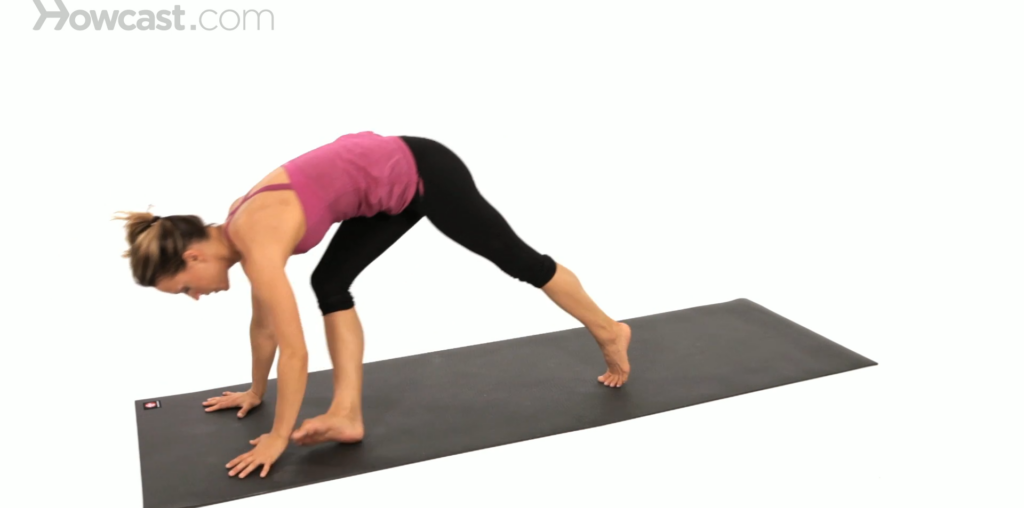Yoga, with its deep roots in mindfulness, flexibility, and strength, offers a variety of poses that challenge both the body and the mind. One such pose, the Double Downward Dog, has recently gained popularity due to its benefits and uniqueness. While the name may sound unusual, the Double Downward Dog is not a complicated pose, but a modification of the traditional Downward Dog pose. In this comprehensive guide, we’ll take a deep dive into what the Double Downward Dog is, how to perform it, its benefits, common mistakes, and tips for perfecting the pose.
What is the Double Downward Dog?
The Double Downward Dog is a dynamic and advanced yoga pose that involves two individuals working together to perform a modified version of the traditional Downward Dog pose. It requires balance, flexibility, and coordination, as well as trust between the two participants. The pose is typically practiced in pairs, making it a great addition to partner yoga routines.
In this variation, one person assumes the traditional Downward Dog position while the other person “walks” their feet onto the hips of the first participant, forming an upside-down “V” shape with both bodies. This creates a visually striking pose that challenges the core strength and stability of both individuals. It is also an excellent way to explore deeper stretches, improve flexibility, and build a stronger mind-body connection.
How to Perform the Double Downward Dog Pose
Before attempting the Double Downward Dog pose, it’s important that both participants are comfortable with the traditional Downward Dog. This foundational pose strengthens the upper body, stretches the hamstrings and calves, and opens the chest. Once you feel confident in the basic Downward Dog, here’s how to move into the Double Downward Dog:
Step 1: Begin in the Traditional Downward Dog
One person starts in a standard Downward Dog position with their hands placed shoulder-width apart and feet hip-width apart. Ensure that the body forms an inverted “V,” with the hips lifting high and the heels pushing toward the ground. Keep the head between the arms and the neck relaxed, gazing toward the legs or the floor.
Step 2: The Second Person Sets Up
The second participant stands facing the first one and positions their feet onto the first person’s hips. They should keep their legs straight and ensure they have enough space to balance their weight on the first person’s body. With their hands on the ground for support, they will begin to gradually shift their weight onto the hips of the first person.
Step 3: Achieve the Final Position
As the second participant steps onto the first person’s hips, they lift their legs and align them with the body, ensuring they maintain a straight line from their shoulders to their heels. The second participant should also keep their arms extended, making a triangle shape with their body. Both people should breathe deeply, engaging their core to stabilize their bodies in the pose.
Step 4: Hold and Release
The pose can be held for several breaths or for as long as both participants feel comfortable. To exit the pose, the second person should carefully step down from the first person’s hips, and both individuals can gently transition back to standing or another resting position, such as Child’s Pose.
Benefits of the Double Downward Dog
The Double Downward Dog provides a range of physical and mental benefits for both individuals involved. Whether you’re practicing it alone or with a partner, you can expect the following benefits:
Increased Flexibility
The Double Downward Dog helps improve flexibility in the hamstrings, calves, and spine. The first person benefits from a deeper hamstring stretch as their hips are lifted, and the second person enjoys a stretch in the back, legs, and shoulders as they hold their position.
Core Strength and Stability
Both individuals are required to engage their core muscles to maintain balance and stability during the pose. This helps build core strength, which is essential for many yoga poses and daily activities. The first person must also activate their core to stabilize the body, while the second person uses their core to balance on the first person’s body.
Improved Balance and Coordination
Performing the Double Downward Dog requires trust and coordination between the participants. As you learn to synchronize your movements, both individuals develop better balance and body awareness.
Better Posture
The pose encourages alignment and balance between the upper and lower body. As you practice this pose, you’ll become more aware of the alignment of your spine, shoulders, and hips, contributing to improved posture in your daily life.
Mental Clarity and Connection
Partner yoga poses like the Double Downward Dog foster communication, trust, and connection between the participants. The shared experience of balancing and synchronizing movements encourages mindfulness and promotes a deeper connection to the present moment.
Common Mistakes in the Double Downward Dog Pose
Even though the Double Downward Dog is a fun and powerful pose, it’s important to practice it with attention to detail. Here are some common mistakes to watch out for:
Misalignment in the Hips
In the Double Downward Dog, the hips need to be lifted high in the air for proper alignment. If the hips are not elevated enough, the pose may lose its effectiveness and can even cause strain in the lower back. Both participants should focus on creating a straight line from the heels to the hips to ensure proper form.
Lack of Core Engagement
Engaging the core is essential to holding the pose effectively. Without proper core engagement, both participants may lose their balance or experience unnecessary strain on their shoulders or back. Practice pulling the belly button in toward the spine to activate the core muscles.
Improper Foot Placement
The second person’s feet should be placed firmly on the hips of the first person, not on the lower back or spine. Placing the feet too high or too low can cause discomfort or reduce the effectiveness of the stretch.
Overextending the Legs
When the second participant extends their legs, they should keep them straight but not over-extend them. Overextending the legs can cause tension in the lower back and shoulders. Focus on lengthening the legs while keeping them in line with the body.
Tips for Perfecting the Double Downward Dog
To successfully master the Double Downward Dog, here are some helpful tips:
Build Strong Foundations
Before attempting this advanced pose, make sure both participants have a strong foundation in basic yoga poses like Downward Dog and Plank Pose. It’s also helpful to practice core-strengthening poses such as Boat Pose or Plank variations to build stability.
Communicate with Your Partner
Since this pose involves two participants, clear communication is key. Let your partner know when you’re ready to move, and make sure you both understand the instructions before attempting the pose.
Practice Breath Control
As with all yoga poses, maintain steady and controlled breathing throughout the Double Downward Dog. This will help you stay calm, focused, and centered as you hold the position.
Start Slowly
If you or your partner are new to the Double Downward Dog, start by practicing it slowly and gradually. Begin by holding the position for a few seconds and increase the duration as you gain more confidence.
Use Props if Necessary
If balance or comfort is an issue, consider using yoga props, such as blocks or cushions, to support the position. This can help make the transition easier and allow you to practice safely.
Conclusion
The Double Downward Dog is an exciting and rewarding yoga pose that provides numerous physical and mental benefits. By practicing this pose, both individuals can improve flexibility, balance, and coordination while fostering a sense of trust and connection with one another. Although it may take time to master, the Double Downward Dog is a great way to deepen your yoga practice and explore new levels of flexibility and strength.


